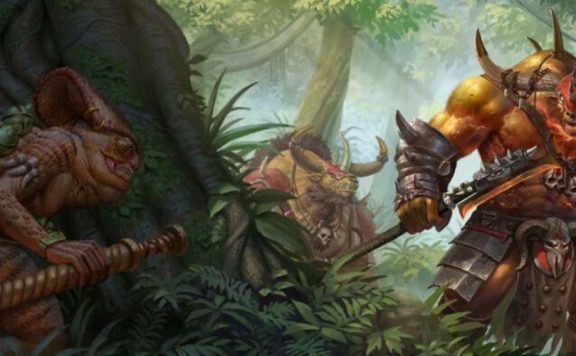One of the strengths of the Warhammer fantasy world is the breadth and depth that it has in the number of races and the established lore that it contains. There’s so many places that game developers can take things, from the end of the world, as seen in Vermintide, to the sports field in Blood Bowl, or to Total War: Warhammer’s grand campaign and epic battles. While there was just one year’s gap between the first and second games, Creative Assembly added new races, new campaigns and stories at a steady rate, and they intend to do exactly the same for Total War: Warhammer II with the release of the wittily titled Rise of the Tomb Kings on 23rd January.
The Tomb Kings are a rather different race to play as, as they wake from their long, lifeless slumber in the deserts of the ancient kingdom of Nehekhara and seek to dominate the world once more. It’s another undead race to play with, but one that Creative Assembly have clearly worked hard to differentiate from the Vampire Counts that were in the original game.
Unlike other races, the Tomb Kings don’t pay directly to raise their armies on the campaign map. You still have a limit to the number of units you can have spring out of the ground each turn, but you can literally have as many skeletons as you want to march across the battlefield. While that sounds intimidating (and it really will be if you face this early on in the game), these are only the most basic of units.
Standard skeleton soldiers might be good for swarming the enemy, but you’ll want those archers, the chariots and more to truly deal damage. You’ll need to build certain structures in your cities in order to add special unit slots to your army, so the Quicksand Swamp adds capacity for two skeleton horsemen and two skeleton horsemen archer units. There’s a fascinating tradeoff in the campaign here, where the Tomb Kings can have these units for free, but can only have as many as their buildings allow, while other races simply need a particular building in order to recruit as many of a unit as they desire.

In battle, they have a unique quirk in the Realm of Souls. The more of your units that are killed, the further this meter builds up through the course of the battle, with three thresholds to pass that will be able to heal all of your remaining units and spur you on. The final third tier then goes to unlocking a huge Ushabti construct into battle. It has the potential to really turn the tide of battle in your favour, not once, but three times through the fight.
Pulling back to the grand campaign and what’s equally fascinating about the Tomb Kings is the thematic way in which their tech tree works. Given that their civilisation has endured for thousands of years, you’re not actually researching new things, but rather delving into the past and researching the dynasties of Nehekhara, deciding to unearth unique Tomb Kings to bolster your empire and what path you will take. Similarly, the great buried wealth of the former Nehekhara empires can be unearthed via the Mortuary Cult, with Liche Priests coming to construct unique magic weapons, armour, talismans and even Legions of Legend from long ago.
The overarching goal within the Eye of the Vortex campaign for the Tomb Kings isn’t to take control of the vortex, but rather to search for the nine Books of Nagash. It’s a similar structure to the campaigns the first four races in Warhammer 2 have to battle through, but with a different payoff at the end. Most importantly for fans, this expansion takes a rather different form to those that have gone before. Where they would previously feature a smaller scaled campaign based around the new faction, Rise of the Tomb Kings ditches that in favour of having four distinct Legendary Lords to lead your forces in the grand campaign, each with their own backstory and quest line to follow.

Settra the Imperishable is the ultimate leader and ruler of the Tomb Kings and has the bonuses and grand additions to his army that you’d expect, while High Queen Khalida’s backstory features the creation of Vampirism itself and led to the Vampire Counts existence, while Grand Hierophant Khatep enjoys bonuses to dynastic research and can replenish his army casualties much quicker, as the oldest and most powerful Liche Priest. Arkhan the Black is most curious, however, as something of an outcast from the Tomb Kings thanks to his actions that helped bring Nagash to power. Amusingly, he enjoys good relations with the Vampire Counts and quite happily lives with vampiric corruption within his domain.
With a whole host of twisted Egyptian mythology as their inspiration, the Tomb Kings add something new and fresh – well, as fresh as rotten, reanimated skeletons can be – to Total War: Warhammer II. Even when compared to the similarly undead Vampire Counts, there’s a distinct flavour and tone to the Tomb Kings that will make them fascinate to explore the campaign with.



